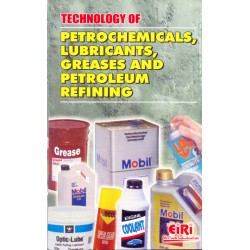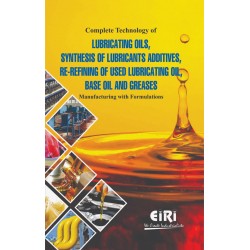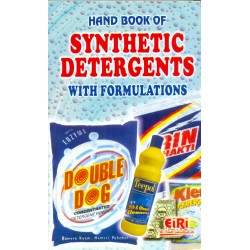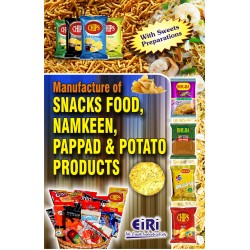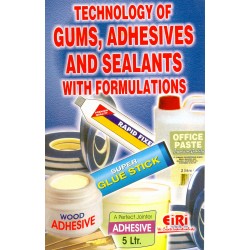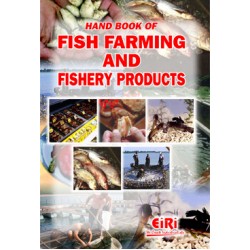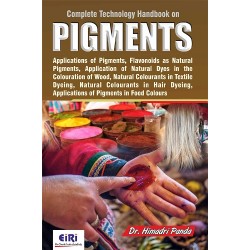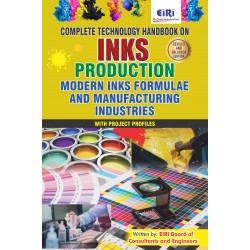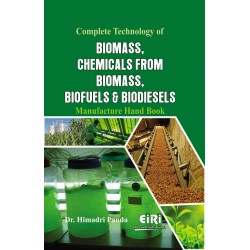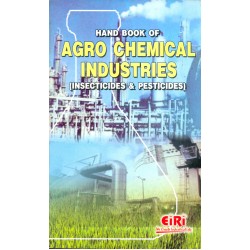hand book of lubricants, greases and petrochemicals technology
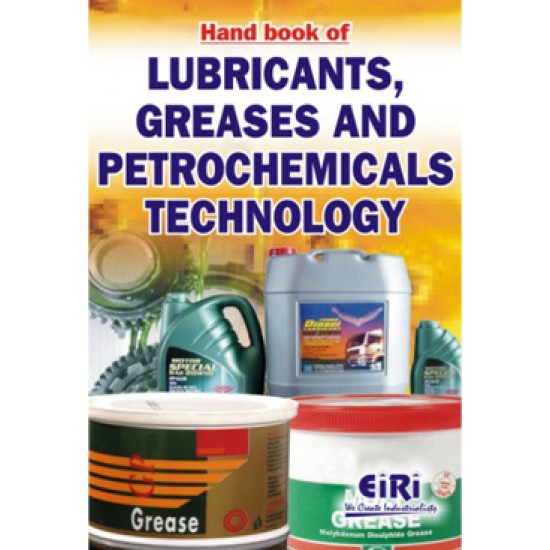
- More than 40 years of experience
- Managed by expert industrial consultants
- ISO 9001-2015 Certified
- Registered under MSME, UAM No: DL01E0012000
- 24/5 Research Support
Get your quesries resolved from an industry expert. Ask your queries before report or book purchase. - Custom Research Service
Speak to the our consultant to design an exclusive study to serve your research needs. - Quality Assurance
All reports are prepared by highly qualified consultants & verified by a panel of experts. - Information Security
Your personal & confidential information is safe & secure.
HAND BOOK OF LUBRICANTS, GREASES AND PETROCHEMICALS TECHNOLOGY
PRODUCT INTRODUCTION
LUBRICATING BASE STOCKS
Introduction
Classification
Composition and properties of Lubricating oil fractions
Production of lub stocks
Deasphalting
Solvent refining
Dewaxing
Decolourizing
Yield and properties of lubricating oil base stocks
Yield
Properties
Typical properties of Base stocks from Aghajari Crude
Development in process ing in India
OXIDATIVE DEGRADATION AND STABILISATION OF MINERAL OIL BASED LUBRICANTS
Introduction
Autoxidation of hydrocarbons
Oxidation of hydrocarbons at low temperature
Initiation of the radical chain reaction
Propagation of the radical chain reaction
Chain branching
Termination of the radical chain reaction
Oxidation of hydrocarbons at high temperature
Secondary oxidation phase
Metal catalysed autooxidation of hydrocarbons
Oxidation stability of base oils
Inhibition of oxidation degradation of lubricants
Radical scavengers
Sterically hindered phenols
Reaction mechanism
Aromatic amines
Reaction mechanism
Organocopper antioxidants
Organosulfur Compounds
Zinc dialky dithicarbamates
Multifunctional additives
Zinc dithiophosphates
organomolybdenum compounds
phenates and salicylates
sulfur nitrogen and sulfur/phshours compounds
Synergism between antioxidants
Application of antioxidants
Anti wear hydraulic fluids
Future antioxidant technology
Antiodidants for industrial lubricants
Antioxidants for engine oils
LUBRICATING OILS CLASSIFICATION
Introduction
Classification
Automotive oils
Crankcase Oils
Axle and Transmission oils
Automatic Transmission Oils
Industrial lubricating oils
Machine and engine oils
Steam Cylinder oils
Steam turbine oils
Diesel Engine Oils
Compressor oils
Spindle Oils
Gear oils
Hydraulic oils
Circulating oils
Electric Motor Bearing Oils
Wire Rope Lubricants
Speciality oils
Insulating oils
Transformer oils
Switchgear oils
Cable oils
Capicitor oils
White oils
Medicinal white oils
Technical white oils
Instrument oils
Spray oils
Plant spray oils
Dust allaying oils
Textile oils
Rubber oils
Vacuum pump oils
Refrigerator oils
Metal working oils
Cutting oils
Soluble cutting oils
Straight cutting oils
Metal forming oils
Rollingoils
Drawing oils
Heat treatment oils
Quenching oils
Tempering oils
SYNTHETIC FLUIDS
Introduction
Polyalphaolefins
Properties and applications
Table base fluid comparisons
Alkylated aromatics
Introduction
Production and general propertes
Applications
Polybutenes
Introduction
Markets
Properties
Lubricant applications
Synthetic esters
Introduction
Ester types
Manufacture of esters
Physicochemical properties of ester lubricant
Hydrolytic stability
Environmental aspects
Polyalkylene glycols
Introduction
Key properties
applications
Phosphate esters
Introduction
SPECIALITY OILS
Introduction
Acid Treatment
Reaction and purpose
Reaction Temperature
Acid dosage
Process of manufacturing
Neutralization and washing
Sludge disposal/pollution control
Recovery of sulphonates
Clay treatment and filtration
Purpose and action
Absorbents
Percolation filtration process
Hydrotreating process
Base stocks
Madras refineries Ltd.
Lube India Ltd.
MISCELLANEOUS ADDITIVES AND VEGETABLE OILS
Friction modifier
Introducton
Friction and lubricating regimes
Friction modifier mechanisms
Chemical aspect of friction modifiers
Antagonisms between friction modifers and other additives
Lubricity additives in Diesel fuel
Pour point depressants
Low temperature operations
Mechanism of pour point depressants
Demulsifiers and antifoams
Introduction
Emulsion stabilisation
Demulsification
Demulsifiers
Foam stability
Antifoams
Foam studies
Corrosion inhibitors
The process of corrosionCorrosion inhibitors
Corrosion testing
Vegetable oils
Chemistry and physical properties
Extraction and processing
Uses
VARIOUS FORMULATIONS OF LUBRICANTS AND GREASE
Textile Lubricants
Lubrication for Wool
Lubricant for Worsted Yarn
Textile Lubricant for Spinning Jute, etc.
Rope Lubricant
Some Important Formula
U.S. Patent
Preparation of complex Soap Lead base Greases
Importance of Soap Salt Complexes, and their Characteristics
General claims for Soap Salt Complexes for Lubricating Greases
Some Methods for Forming Soap Salt Complexes
Complex Aluminium Soap Lubricating Greases
Complex Barium Soap Lubricating Greases
Complex Calcium Soap Lubricant
Another Example is:
Complex Lithium Soap Salt Lubricating Greases
Complex Strontium Soap Lubricating Greases
ASPHALT TECHNOLOGY
Source of Asphalt (Bitumen)
Chemical Structure of Asphalt
Action of Heat on Asphalt
Types of Asphalts
Air Blowing of Bitumen
Upgradation of Heavy Crudes
SPECIALTY PRODUCTS
Industrial Grease
Manufacture of Calcium Grease
Liquid Paraffin
Production of Paraffins
Petroleum Jellys
TREATMENT OF LUBES
Sulfuric Acid Treatment
Clay Treatment
Solvent Treatment
Duo-sol (Selecto)
About Extraction
THE FORMULATION OF AUTOMOTIVE LUBRICANT
Introduction
Why there are so many type of lubricant
Multifunctional Lubricants
INDUSTRIAL LUBRICANTS
Introduction
General aspects of industrial lubricants
Classification of industrial lubricants
LUBRICATING GREASES
Introduction
Grease Vs oil
Advantage
Disadvantage
The constituents of grease
Petroleum oils
Thickeners
Soap gelling agents
Non soaps gelling agents
Synthetic fluids
Additives
Fillers
Classification of greases
Sodium soap greases
Calcium Soap Grease
Lithium soap greases
Aluminium soap greases
Other greases
Mixed soap grease
Silica Based Greases
Clay based greases
Carbon Black greases
Phthalocyanines Based greases
Indanthrene bases greases
Sodium octadecy terephthalamate bases greases
Aryl substituted urea based greases
Diamidodicarbonyl based greases
Synthetic greases
Classification according to use
Structure of grases
Soap gelling agent
Properties of greases
Viscosity of the oil
Loss on evaporation
Oxidation stability
Heat stability
Temperature limits of operation
Mechanical properties
Operating life
MANUFACTURE OF LUBRICATING GREASES
Introduction
Soap base greases
Conventional method
Calcium soap greases
Manufacture of anhydrous grease
Sodium greases
Mixed soap greases
Manufacture of aluminium and lithium base greases
Aluminium base greases
Lithium base greases
Manufacture of cold sett greases
Non soap base greases
LUBRICANT AND THEIR ENVIRONMENTAL IMPACT
Introduction
Used industrial lubricants
Used automotive lubricant
Treatment of collected lubricant
Production of fuel oil blending component
Reclamation of lubricating oils
Production of re-refined lubricant base oils
Acid/clay treatment
Solvent extraction
Health and safety aspects of re-refined oil
Environmental consideration of waste lubricant
Biodegradation tests of oils
Current status and applicability
Future trends
JATROPHA (BIO DIESEL) CULTIVATION & EXTRACTION
Process of Manufacture
Plant Economics of Jatropha (Bio-Disel) Cultivation & Extraction
CRUDE OIL BLEACHING FOR PETROLEUM JELLY
Techniquies of Manufacturing Process
Acid Treatment
Reaction and Purpose
Temperature
Plant Economics f Crude oil Bleaching of Petroleum Jelly
Fixed Capital
Raw Materials
Total Working Capital/Month
Total Capital Investment
Turn Over/Anum
SOLUBLE CUTTING OIL
Process Flow Diagram for the Manufacture of Soluble Cutting Oil
Fixed Capital
Raw Materials
Total working capital/month
Total capital investment
Turn over/annum
EMULSIFIERS FOR CUTTING OILS
Formulation of Cutting Oil Emulsifier base
Plant Economics of Emulsifier for Cutting Oil
Fixed Capital
Total Working Capital Month
Total Capital Investment
Turn Over/Annum
PETROLEUM JELLY
Process of Manufacture
Plant Economics of Petroleum Jelly
Fixed Capital
Raw Materials
Total Working Capital/Month
Total Capital Investment
Turn over/Annum
TOLUENE AND SBP FROM CRUDE NAPHTHA
Plant Economics of Toluene and SBP from Crude Naphtha
Raw Materials
WHITE OIL FROM KEROSENE OIL
Plant Economics of White Oil from Kerosene Oil
Total Capital Investment
Turn over/Annum
TRANSFORMER OIL
Plant Economics of Transformer Oil
Fixed Capital
Raw Materials
Total working capital/month
Total capital investment
Turn Over/Annum
BIODIESEL PROJECT REPORT
Product Description and Uses
Market Survey and Demand Supply Position
Manufacturing process Description
Brief Process Descrption
Biodiesel Process in Detail
Ingredients
Procedure
Production of Biodiesel using Jatropha as Feedstock
Quantity of Methanol to be used
Treatment of Liquid Effluents
Power Requirement
Utilities Specifications
Marment and Selling Arrangements
Production capacity and Target
Cost of project and Means of Finance
Land
Building
cost of utilities
Engineers India Research Institute (EIRI) is a renowned name in the industrial world for offering technical and
financial consultancy services.
EIRI services are:
Detailed Feasibility Reports
New Project Identification
Project Feasibility and Market Study
Identification of Lucrative Industrial Project Opportunities
Preparation of Project Profiles / Pre-Investment and Detailed Feasibility Studies,
Market Surveys / Studies, Market Survey Cum Detailed Techno-Economic Feasibility Reports
Project Reports in CD Roms
Identification of Plant /Process/Machinery and Equipment, Industrial General Guidance for setting up new industrial
projects.
Our most up-to-date and Technologically Advanced Industrial Project Reports, categorized with respect to
Financial Outlays and Sector – wise Classification are immensely useful for :
Existing Small or Medium Scale Industrialists facing competition from large houses
Young Entrepreneurs dreaming to start their own industrial enterprise
Young Graduates and Professionals wishing to begin their career
Industrialists interested in Debottlenecking their capacities & New Product – Lines
Large Industrial Houses pursuing Expansion, Growth and Diversification Plans
How to Make Project Report?
Detailed Project Report (DPR) includes Present Market Position and Expected Future Demand, Technology, Manufacturing Process, Investment Opportunity, Plant Economics and Project Financials. comprehensive analysis from industry covering detailed reporting and evaluates the position of the industry by providing insights to the SWOT analysis of the industry.
Each report include Plant Capacity, requirement of Land & Building, Plant & Machinery, Flow Sheet Diagram, Raw Materials detail with suppliers list, Total Capital Investment along with detailed calculation on Rate of Return, Break-Even Analysis and Profitability Analysis. The report also provides a birds eye view of the global industry with details on projected market size and then progresses to evaluate the industry in detail.
We can prepare detailed project report on any industry as per your requirement.
We can also modify the project capacity and project cost as per your requirement. If you are planning to start a business, contact us today.
Detailed Project Report (DPR) gives you access to decisive data such as:
- Market growth drivers
- Factors limiting market growth
- Current market trends
- Market structure
- Key highlights
Overview of key market forces propelling and restraining market growth:
- Up-to-date analyses of market trends and technological improvements
- Pin-point analyses of market competition dynamics to offer you a competitive edge major competitors
- An array of graphics, BEP analysis of major industry segments
- Detailed analyses of industry trends
- A well-defined technological growth with an impact-analysis
- A clear understanding of the competitive landscape and key product segments
Need Customized Project Report?
- Ask for FREE project related details with our consultant/industry expert.
- Share your specific research requirements for customized project report.
- Request for due diligence and consumer centric studies.
- Still haven't found what you're looking for? Speak to our Custom Research Team
About Engineers India Research Institute:
Note: We can also prepare project report on any subject based on your requirement and country. If you need, we can modify the project capacity and project cost based on your requirement.
Our Clients

Our Approach
- Our research reports comprehensively cover Indian markets (can be modified as per your country), present investigation, standpoint and gauge for a time of five years*.
- The market conjectures are produced on the premise of optional research and are cross-accepted through associations with the business players
- We use dependable wellsprings of data and databases. What's more, data from such sources is handled by us and incorporated into the report
Why buy EIRI reports?
- Our project reports include detailed analysis that help to get industry Present Market Position and Expected Future Demand.
- Offer real analysis driving variables for the business and most recent business sector patterns in the business
- This report comprehends the present status of the business by clarifying a complete SWOT examination and investigation of the interest supply circumstance
- Report gives investigation and top to bottom money related correlation of real players/competitors
- The report gives gauges of key parameters which foresees the business execution





















